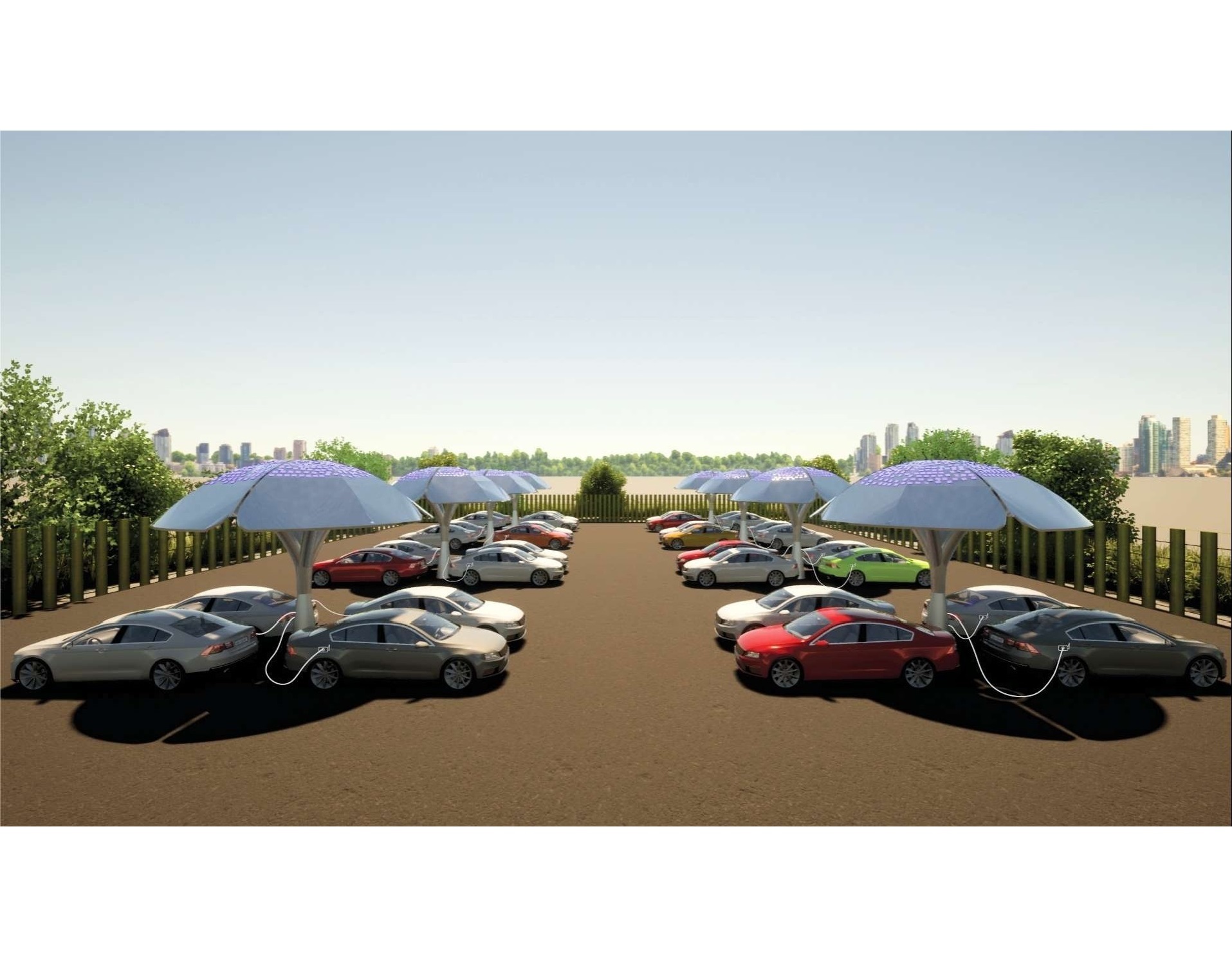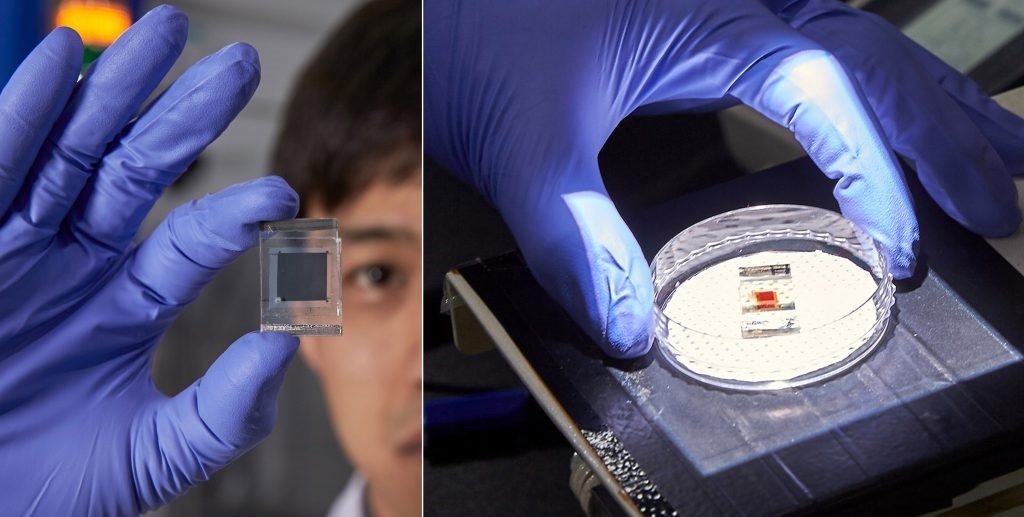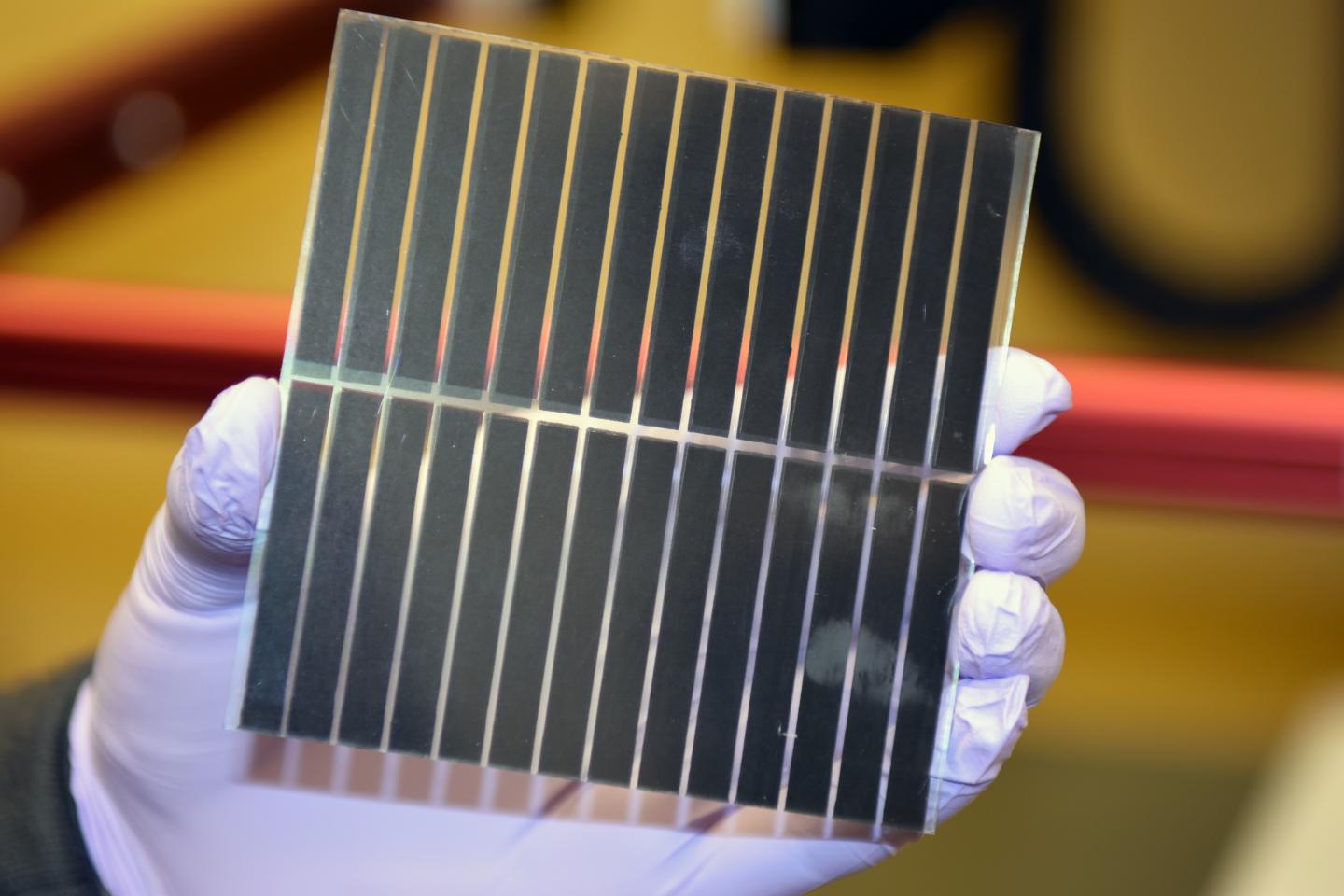Nov 18, 2014
Solar energy from photovoltaic installations is, actually, considered ecologically beneficial. But most of the photovoltaic modules contain contaminants, among others cadmium and lead. These can leak into the soil or groundwater when the modules are disposed. Scientists of the University of Stuttgart now examine how the poisonous substances are released and how this can be prevented.
Having started as a “green” niche product, solar energy has meanwhile grown to a world market. More than 17 millions of tons of modules have been installed throughout the world with a capacity of approx. 140 Gigawatt. The anticipated average life of today’s solar modules is between 20 to 25 years. Though this sounds very long, it is in fact a limited period of time. So the question arises what is going to happen with the modules after their use. Unfortunately, most solar modules contain pollutants – although there is no technological necessity for it.
E.g., in all module technologies tin solder containing the heavy metal lead is used for the soldering ribbons. Crystalline silicon modules require the highest amount of soldering ribbons because of their cell-to-cell connections. In the thin-film technology these soldering ribbons are used as well to connect the module box to the cells. Only a very small number of companies in the world sell lead-free solar modules.
Apart from lead, other hazardous substances can be found, so e.g. cadmium sulfide which is often used as buffer layer in the thin-film technology for copper indium gallium diselenide cells. In cadmium telluride modules even the active material itself consists of hazardous substances. Only modules made of amorphous silicon are contaminant-free, as long as they are produced without lead-containing soldering ribbons. Contrary to other electric or electronic devices, cadmium and lead have not been forbidden for solar modules of all things within the EU.
For these reasons, scientists of the Institute of Photovoltaics (ipv) and the Institute for Sanitary Engineering, Water Quality and Solid Waste Management (ISWA)” at the University of Stuttgart are now examining by which way these pollutants are released by modules and are trying to identify weak points. Their aim is to understand the mechanisms of pollutant release so well that it can be prevented or slowed down in future – at least as long as lead and cadmium are still used. The project titled “Pollutant release from solar modules, in short PV pollutants, is funded by the Federal Ministry for Economics and Energy with 800.000 €.
In a previous worst-case study for the Ministry of Environment, Climate and Energy Baden Württemberg both institutes were able to show that the pollutants are released when the modules are damaged and aqueous solutions can penetrate through the defect into the module. To quantify the release, the scientists examined module parts in aqueous solutions at different ph values simulating different environmental conditions.












